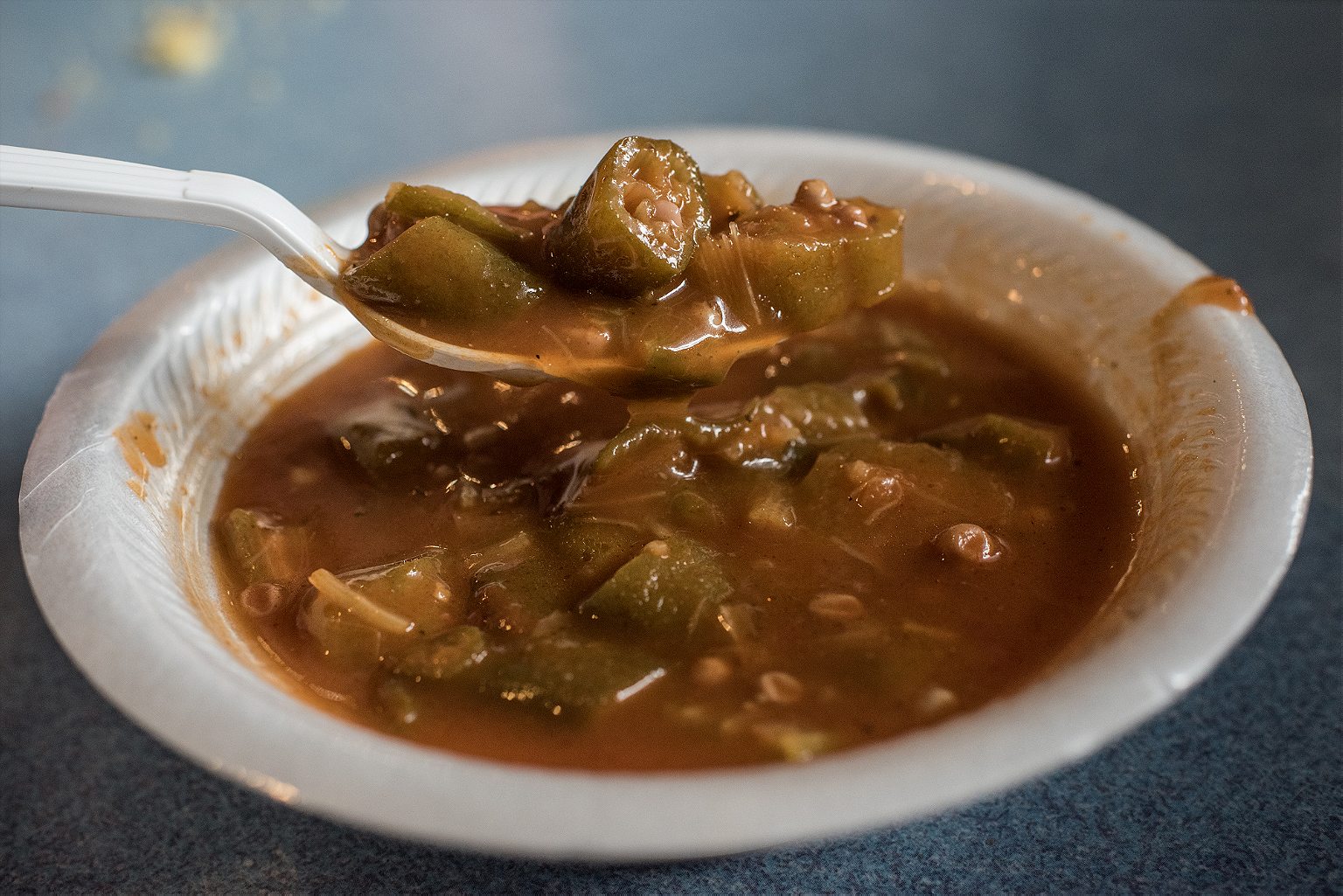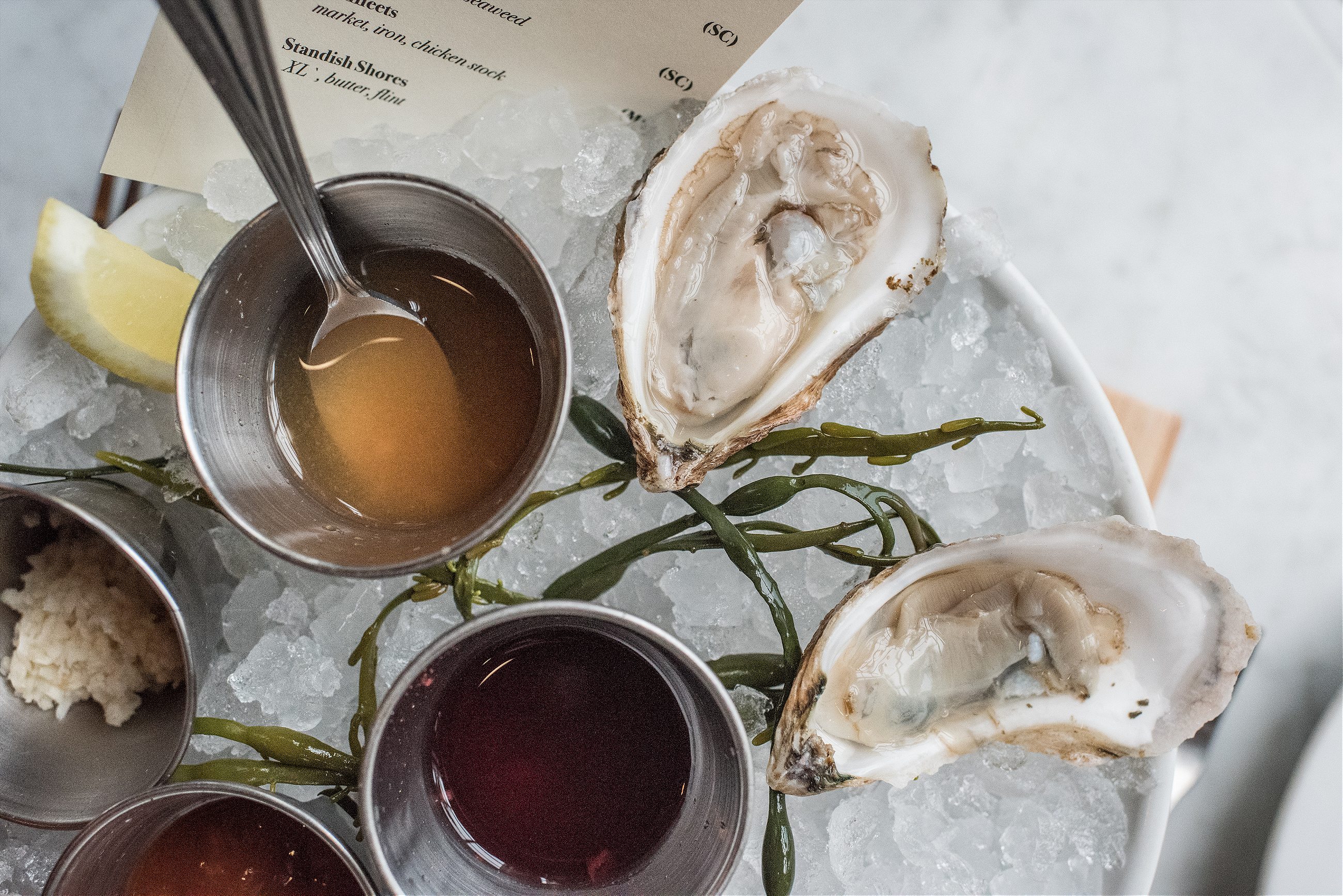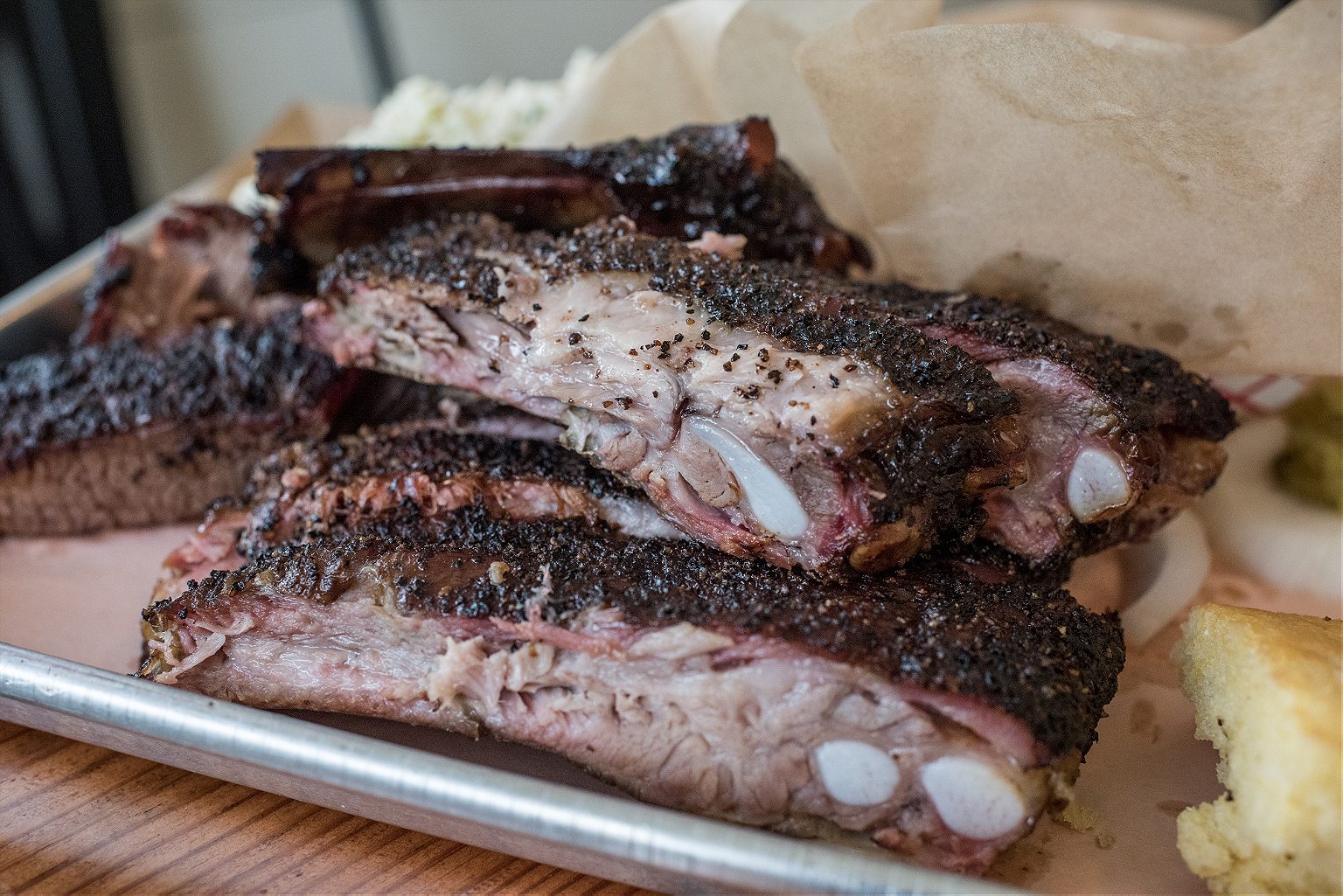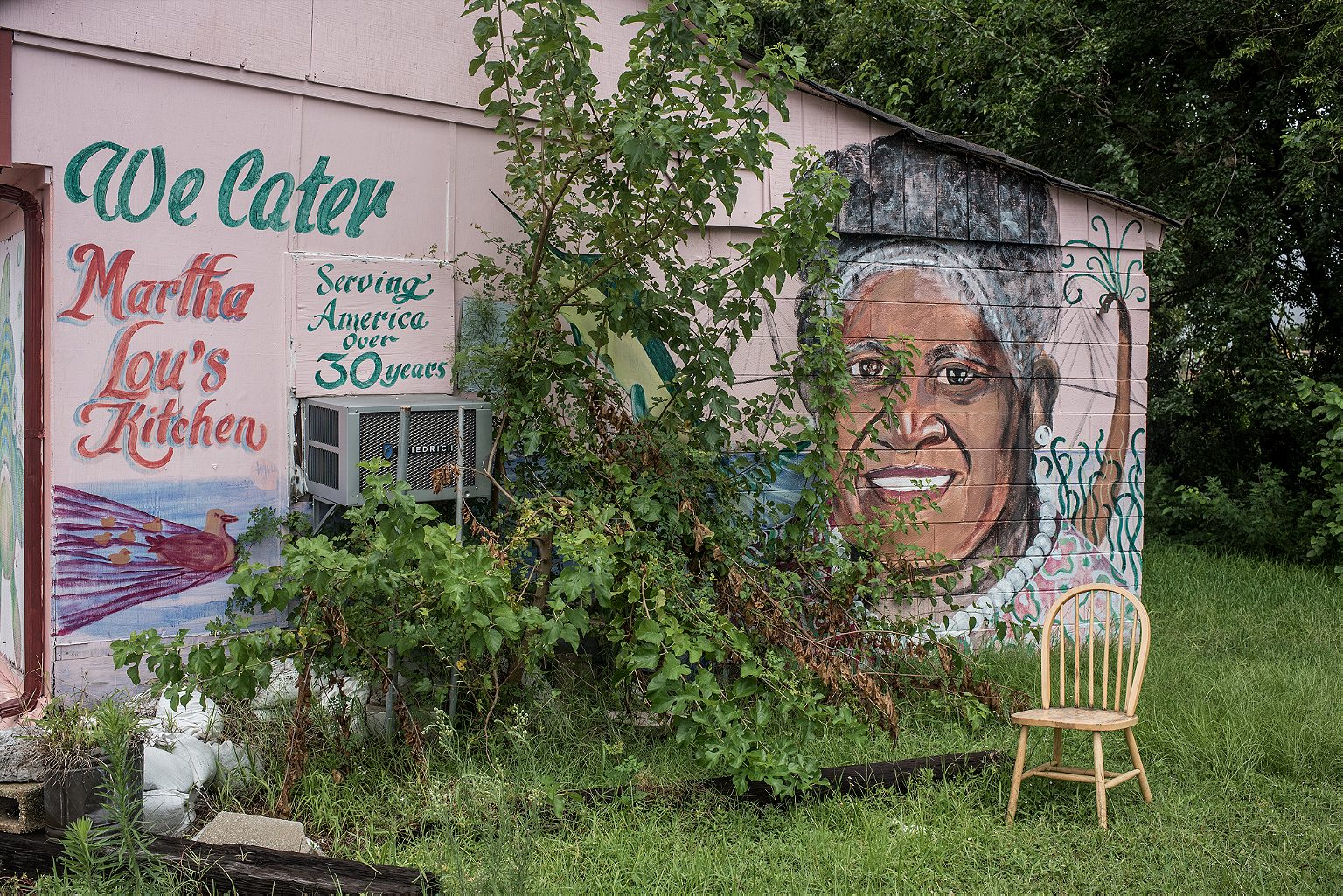From rice to oysters, the food that feeds Charleston.
In Charleston, food and history are inseparable. Its unique culinary style was created, in large part, by turning to the past and embracing the ingredients and dishes found in South Carolina’s Lowcountry for centuries. Forward-looking cooks have taken the rest of the world as inspiration, blending traditional local fish and produce with techniques and flourishes from around the globe. Charleston’s signature dishes, such as shrimp and grits and she-crab soup, were once barely known outside the Lowcountry. Now they have spread far beyond the city, becoming part of the evolving canon of “New Southern” cuisine served in restaurants from Louisville to Tampa. Still, Charleston’s food remains particular to the place. Through its signature dishes one can trace the long, complex history of one of America’s oldest and most vibrant cities.
Pilau

In Charleston, everything goes back to rice. It was the foundation of the colonial economy and it made Charleston the richest city in the British colonies. Cultivated on plantations carved out of tidal swamps, the exported grains generated enormous fortunes for a handful of planters—and it did so through the forced labor of tens of thousands of people brought against their will from Africa. It was in the rice fields of South Carolina that the institution of slavery in the American South was codified—the original sin that still shapes Charleston’s political and social life today.
A bowl of cooked white rice was omnipresent on the Charleston dinner table, and the grains were used in everything from bread to desserts. The crowning glory of Carolina rice cookery was pilau (or, as it is frequently spelled and pronounced, “perlo” or “purloo.”) A relative of Turkey’s pilaf and Spain’s paella, the dish originated in Persia, spread across southern Europe and Africa, and was brought to the Lowcountry by the enslaved laborers who grew the rice.
A traditional Lowcountry pilau was made by washing and pre-soaking the rice grains, then simmering them in an aromatic broth. In the final step, the rice was removed from direct heat and set aside on the fireplace coals to steam—a process known as “soaking”—until the cooking liquid was fully absorbed and each grain stood out separate and distinct from the rest, the hallmark of a properly-made pilau.
Charlestonians usually made their pilaus with chicken or shrimp, which were cooked in the same pot along with the rice, imbuing the grains with rich flavors. By the early 19th century, the rice used in the best pilaus would have been Carolina Gold. That famed variety, a medium-grain rice with a clean, sweet flavor, was prized around the world. It became the mainstay of South Carolina’s rice industry as well as its kitchens.
Gumbo (Okra Soup)

Gumbo is closely associated with New Orleans and Cajun cuisine, but its historical footprint is much broader. It is also a traditional Charleston dish and a prime example of the lasting presence of West African foodways in the city’s cuisine.
Though Louisiana cooks later started using filé (powdered sassafras leaves) or a roux to thicken their gumbos, the dish’s name reveals its original main ingredient. Ki ngombo, or, in its shortened form, gombo, is the word for okra in several West African languages. The plant was cultivated first by enslaved Africans in their family plots and later adopted by white Carolinians.
Early gumbo recipes call for stewing sliced okra pods with ripe tomatoes, onions, butter, and salt and pepper. That original form lives on in Charleston today, thought it’s more commonly called “okra soup”. A staple on the menus in the city’s Gullah (the African-American population of the Lowcountry descended from Central and West African groups) restaurants such as Bertha’s Kitchen and Hannibal’s Kitchen, it’s often enriched by a meaty beef shank or sometimes fresh shrimp—but it’s those green okra pods that link the dish directly to the colonial era.
Hopping John

Any country in the New World with a significant population of African descent has its own variation of a rice-and-bean dish—moros y cristianos in Cuba, pois et riz collé in Haiti, red beans and rice in New Orleans. Charleston’s rice and bean dish is called Hopping John, and it’s long been a tradition to eat it on New Year’s Day to ensure luck in the upcoming year.
Hopping John dish is essentially a bean pilau, with field peas instead of chicken being cooked with the rice. The original recipe was simple: a pound of bacon, a pint of peas, and a pint of rice, all cooked together in a single pot. Like okra, these were cultivated at first by enslaved workers on the private plots from which they fed their own families. In the early decades of 19th century, they were adopted by farmers across the South to replenish soil exhausted by tobacco, corn, and cotton, and Hopping John soon became a popular dish for black and white Charlestonians alike.
Modern commodity agriculture has greatly diminished Hopping John. The nutty, aromatic Carolina Gold rice was replaced in the market by blander hybrid rice from Texas and Louisiana, which could be planted on dry ground and mechanically harvested. As cowpeas and red peas became increasingly rare, cooks began substituting black-eyed peas. Fortunately, recent revival efforts by heirloom producers have brought Carolina Gold rice and heirloom pea varieties such as sea island red peas back to the market. Chefs at many of Charleston’s fine dining restaurants, such as Husk and Virginia’s on King, have adopted these heirloom ingredients, and it’s now possible to find upscale versions of old-school Hopping John, a dish so rich and delicious it will make you lucky for a entire year.
Madeira Wine
Madeira, a tiny, 300-square-mile island off the coast of Morocco (and part of Portugal) was the largest source of the wine drunk in Charleston during the Colonial era, and the fortunes of the wine and the city paralleled each other over the decades. Originally a rough, lowly table wine, Madeira found a market in Charleston because the island was a regular stop on the westward trade routes from Europe. As its export business grew, Madeira’s vintners began to improve their products, blending differing vintages and fortifying them with brandy to better stand up to long trips at sea. Shipped in white oak casks known as “pipes,” as the wine jostled in the hot holds of the ships, softening the brandy’s kick and improving the flavor.
By the time of the Revolution, Madeira had become the most expensive wine in the American colonies. Charleston in particular developed a strong direct trade with Madeira, because rice was very much in demand on the island and the wines were very much desired by Charleston’s newly wealthy planters. Prominent families created wine attics instead of wine cellars in their town house. The golden age of Madeira ended suddenly in the 1850s, when a mildew outbreak wiped out the islands vineyards. After the Civil War, the descendants of old elite Charlestonian families, their fortunes shattered by war and the abolition of slavery, gradually auctioned off the contents of their family wine cellars.
Madeira’s vineyards eventually recovered, but its products languished on the market as cheap cooking wine. In the just past few decade, though, the island’s wine-making families have begun reinvigorating their old industry, and fine, long-aged Madeiras are available once again. You can find them today on the wine lists at high-end restaurants like Charleston Grill and Peninsula Grill—a historically correct capper for a luxurious Lowcountry meal.
Oysters: Raw, Stewed, and Steamed

For the first two centuries of its existence, Charleston was more connected commercially with Europe and the West Indies than it was with the other American colonies. That began to change in the 19th century, as railroads and steam-packet service linked the South Carolina to Northern cities—an interconnection that helped shape the city’s evolving food culture.
In the 1820s, Charlestonians adopted the oyster house, a form of commercial dining that had first become popular in New York City. These oyster houses sourced their shellfish from Carolina waters, receiving hundreds of bushells at a time from the rivers around Beaufort, North Carolina and Bluffton, South Carolina.
Over the decades, oyster production grew into a big business. In 1880, 185 people were engaged in the oyster trade, producing some 50,000 bushels a year. By 1908, more than 100 vessels plied local waters, bringing in as many as 20,000 bushels per day during the prime season and supplying local canneries that employed more than a thousand workers.
Around the same time, the oyster roast emerged as a popular form of Lowcountry recreation. These were outdoor events attended by anywhere from a dozen to hundreds of people. Cooks built a fire and placed over it a sheet of iron, supported in the corners by bricks or large stones. Bushel after bushel of oysters were poured onto the heated metal, covered with water-soaked burlap sacks, and allowed to steam until just cooked through. They were then delivered by the shovelful to the hungry guests, who shucked them at long tables and slurped the meat from the still-warm shells.
Charleston’s canneries disappeared after World War II, but local “cluster oysters”—clumps of shells still cemented together—are still a staple at outdoor oyster roasts, which are regular weekend events in the cool months between November and February. Diners line up on either side of long, makeshift wooden tables and, as cooks dump one basket after another hot from the steamers, they go to work with their shucking knives, popping free the warm, tender meat and dressing it with a cocktail sauce, a dash of Texas Pete hot sauce, or perhaps just a squeeze of lemon.
Oyster roasts are often staged as weekend festivals or charity fundraisers that are open to the public, so keep your eyes out if you’re in town during the late fall or early winter. Or, head out toward Folly Beach to Bowen’s Island, a classic Lowcountry seafood shack where they serve steamed oyster by the tray all through the season.
Fried Whiting & Red Rice

A century ago, the Mosquito Fleet—dozens of small open wooden boats with hand-sewn sails—left the Charleston docks before dawn each day. The fishermen, most of whom were African-American men, sailed 10 to 40 miles off the coast, navigating only by dead reckoning. Using hand lines with a dozen hooks attached, they caught hundreds of pounds of black sea bass, porgy, and whiting and brought back them to the docks. The catch supplied a small army of street vendors, who sold them door-to-door throughout the city.
The Mosquito Fleet dwindled after World War II, eclipsed by larger boats with diesel engines, but a taste for fresh whiting lives on in Charleston. Properly battered and fried, its light, firm flesh is sweet and delicate—a splendid Charleston lunch, and an economical one, too. A favorite accompaniment is red rice, which is essentially a tomato pilau, with the rice cooked together with tomatoes and their juices and, as with chicken pilau or Hopping John, seasoned with smoky bacon. Dave’s Carryout and Nana’s Seafood & Soul offer excellent versions.
She-Crab Soup

The New South economic revival that transformed cities such as Atlanta and Birmingham largely passed Charleston by. Once the wealthiest city in the country, Charleston slumbered its way, shabby and moribund, into the 20th century, never developing a downtown with skyscrapers nor the restaurants that came along with brisk commerce. For many decades, the best cooking in the city was found in private homes, not commercial kitchens.
She-crab soup—now one of Charleston’s signature restaurant dishes—emerged from this era of private dining. It was the creation of William Deas, who in the 1920s was the butler for Robert Goodwyn Rhett, a lawyer and former mayor of Charleston. Deas formulated a creamy soup made from the live crabs sold by local street peddlers, and he took to enhancing it with the roe from female crabs, which gave the soup its name, as well as a tangy touch of flavor and a pale orange hue.
In 1930, Deas’s recipe was published in Two Hundred Years of Charleston Cooking, and it quickly become a fixture in homes across the city. Deas went on to make it a restaurant staple, too, when he took a job as the cook for a Everett’s Restaurant, which opened just after World War II on Cannon Street, then a busy highway on the outskirts of town. Deas managed the kitchen at Everett’s until his death in 1961, making it famous for “William Deas She-crab Soup.” They sold as many as thirty gallons of the creamy mixture each day, charging thirty-five cents for a five-ounce cup and sixty-five cents for a bowl. Everett’s closed in the 1970s, but the soup that William Deas invented can now be found on restaurant menus all throughout the city. Anson Restaurant and Hominy Grill offer notable versions.
Mustard-Based Barbecue and Hash and Rice

World War II finally awoke Charleston from its economic slumber. The Charleston Navy Yard expanded rapidly and by the early 1940s was pumping salaries of a half million dollars per week into the local economy. The military remained an economic engine through the Cold War decades, drawing tens of thousands of new residents from rural South Carolina to find work at the Navy Yard and the related businesses that supported it.
Among the many migrants to the city were members of the Bessinger and Dukes families from Orangeburg County, and they opened restaurants serving a unique Midlands South Carolina specialty: barbecue dressed in bright yellow mustard-based sauce with hash and rice on the side. At one point various Bessinger’s and Dukes operated dozens of barbecue restaurants around the Lowcountry, though their empires have contracted in recent years. You can still sample the classic Midlands style at the two Melvin’s locations (one in Mount Pleasant and the other on James Island), at Bessinger’s on Savannah Highway, and at Dukes Barbecue on James Island.
Shrimp and Grits

These days, shrimp and grits is an iconic, pan-Southern dish, found on restaurant menus all over the south. But it started out as a rather obscure local specialty in the Lowcountry, and it rose to prominence as Charleston’s emerging restaurant scene first started gaining national attention.
In the old days, the same street peddlers who hawked the Mosquito Fleet’s whiting sold creek shrimp, too. Caught by nets in the marshes surrounding the city, they are smaller and sweeter than the kind caught by today’s ocean trawlers. Local cooks prepared them simply, too, sauteeing them in a little bacon fat and serving them over a plate of plain white grits. For decades, it was a common breakfast dish in Lowcountry homes.
In the 1980s, shrimp and grits went uptown. In what became known as the New Southern culinary movement, local chefs took traditional local ingredients such as okra and grits and put them on fine dining menus for the first time, but fancied up with European-inspired techniques. Shrimp and grits was the perfect embodiment of this mode of cooking. Chefs swapped jumbo butterflied shrimp for the small creek variety, punched up the grits with cream and expensive cheeses, and dressed them with rich sauces made from smoky bacon or spicy tasso and lots of aromatic herbs. Shrimp and grits have been the signature restaurant dish of Charleston ever since.
Fried Crabs and Garlic Crabs

The legacy of slavery and Jim Crow still looms in Charleston, and, despite the efforts of reformers and civic leaders, deep rifts remain between the black and white communities. The elegant mansions of Rainbow Row have long shared the same peninsula with battered wooden single houses with peeling paint and sagging porches, though the current construction boom and rising rents are increasingly pushing low-income Charlestonians further and further from downtown.
Those divisions have long persisted in the city’s restaurants, too, with the fine dining establishments on East Bay and Upper King Street standing in sharp contrast to the more modest Gullah cafes (what many would call soul food joints) that have traditionally served the black community. The local delicacies found in these neighborhood restaurants and seafood markets—fried whiting, okra soup, oxtail stew—are seldom sold where the tourists gather.

Perhaps the messiest and most delicious of these neighborhood favorites are fried crabs. We’re not talking soft-shell crabs or deviled crab meat, but whole blue crabs still in their hard shells. They’re dredged in flour and spices, plunged into hot oil, and fried golden brown. The “garlic crab” variety, which you can find at restaurants like Nana’s Seafood & Soul or buy takeout at fish markets such as Charlie Brown Seafood, are enrobed in a rich, creamy sauce made with lots of butter and garlic. You break into the crab with your fingers, savoring the sweet, tender meat with the bits of crisp batter and the rich, buttery garlic bite. Be sure to get extra napkins.
Triggerfish
If you see a fish with a name you don’t recognize on the nightly specials board—triggerfish, wreckfish, barrelfish, rudderfish, amberjack—you probably should order it, for they are a now-essential part of the city’s contemporary fine dining style.
Two decades ago, almost all of the fish served in fine-dining restaurants were from a few overfished species—salmon, grouper, snapper—and they were generally shipped in from out of state or even outside the country. In recent years, though, catch that used to be snubbed as “trash fish” have made become staples on Charleston’s fine dining menus.
A few pioneering chefs, tiring of churning out endless bowls of shrimp and grits and she crab soup, started driving down to the docks and taking a chance on ultra-fresh fish that they might be unfamiliar with. As local fishermen established a direct business with restaurants, they began delivering their catch straight to the kitchens’ backdoors.
Trigger may well be best of the top of the class of this new generation of local, sustainable fish. Its delicate white meat sears to a lovely golden brown, a beautiful accompaniment to the bright herbs and fresh heirloom vegetables delivered by local small-scale farmers. It’s become a regular part of the rotation at farm-to-table restaurants such as FIG and The MacIntosh. Fresh, locally-focused, and brimming with flavor, such dishes capture the essence of modern fine dining in Charleston.